Soggy coastal soils? Here’s why ecologists love them
At risk from climate change, these wetlands could actually cut some climate-change impacts
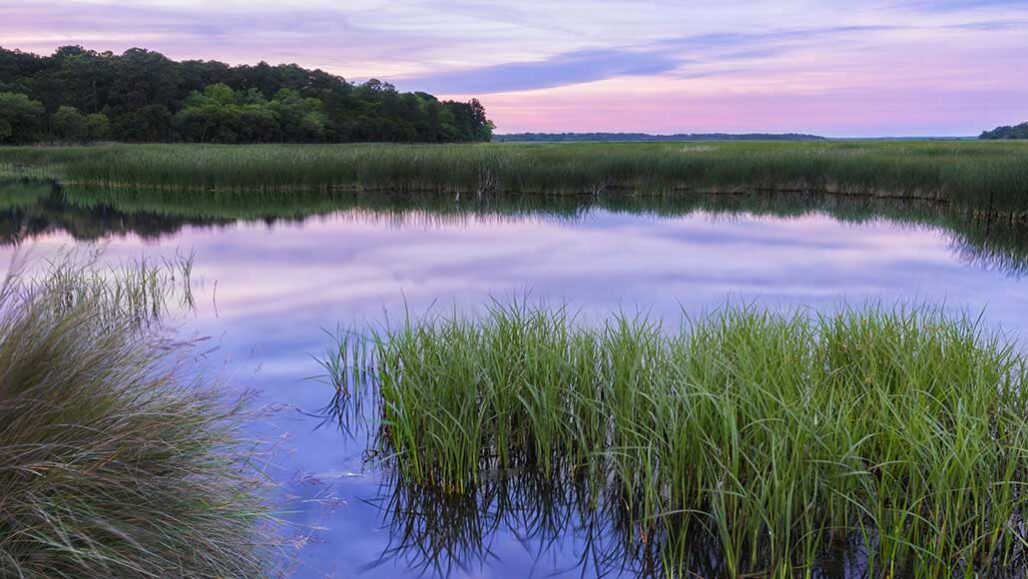
Coastal wetlands like this one in South Carolina are not only beautiful — they’re also functional. They can help counter some of the impacts of climate change and intense storms.
KeithBriley/iStock/Getty Images Plus
Katrina. Harvey. Laura. Sandy. Maria. For some people, these might be merely names. For others, they’re reminders of utter devastation. Some of the most damaging storms to hit North America bear these names. Each one did billions of dollars of damage to buildings, roads and other property. People died in their floodwaters. Many coastal areas have yet to recover.
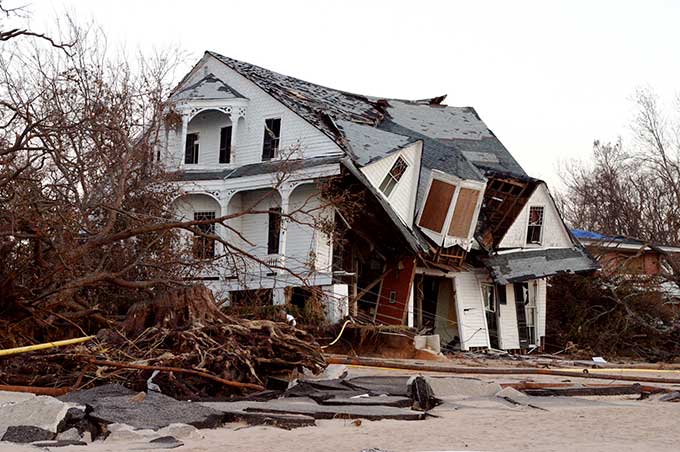
A storm’s destructive power stems from its winds. Powerful gusts not only blow objects around, they also churn up massive waves called storm surges. This is a rapid rise water that rushes onshore, sweeping away trees, cars and almost anything else in its path. Storm surges can flood buildings, trapping people inside or forcing them onto roofs, where they wait for rescue.
What if there were a way to slow those storm surges, to prevent them from scouring the coastline with their raw power? Turns out, there is — if we allow nature to do its thing.
Coastal wetlands hold the key to damping big waves. They provide flood control and critical habitat for young fish and other marine creatures. They help stabilize climate by trapping carbon. And they’re critical for coasts dealing with rising sea levels.
Standing up to storms
Wetlands are more than just wet land. They are ecosystems of plants and animals thriving in areas that flood at least part of the year. Coastal wetlands are often grassy marshes. Warmer areas may support mangroves. These trees grow right along the coastline, their long, stilt-like roots stretching down into the water. Those roots provide critical habitat for fish, shrimp and other marine animals. They also trap silt and other sediment, protecting it from erosion and building up the shoreline.
Anna Armitage is a marine biologist at Texas A&M University at Galveston. There, she studies coastlines along the Gulf of Mexico. Hurricanes regularly hit this area. She and her team have created study plots with randomly placed patches of marsh and mangrove. As temperatures have been warming, mangroves have been spreading. The team wanted to learn about the ecological changes that take place when mangroves overtake a marsh. But in 2017, their plots took a direct hit from Hurricane Harvey. A category 4 storm at the time, Harvey’s winds raged up to 217 kilometers (135 miles) per hour. The event offered a unique opportunity to study how different types of wetlands survive a big storm.
Marshy wetlands came through quite well, researchers found. The storm surge covered the grasses completely. This protected them from damaging winds. “There was erosion right along the shoreline,” Armitage says. But just 10 meters (33 feet) in, the marsh plants were fine. If they were submerged for longer, the plants might have drowned, Armitage notes. But Harvey’s storm surge didn’t last long enough to kill those plants.
High water also protected the shorter, scrubbier mangroves. But trees more than 2.5 meters (8.2 feet) tall, which grew right along the water’s edge, weren’t completely submerged. High winds broke branches above the water and stripped off their leaves. Those areas began to regrow within two months of the hurricane. But they still haven’t completely regrown. “It appears that full mangrove recovery will take longer than two growing seasons,” Armitage says.
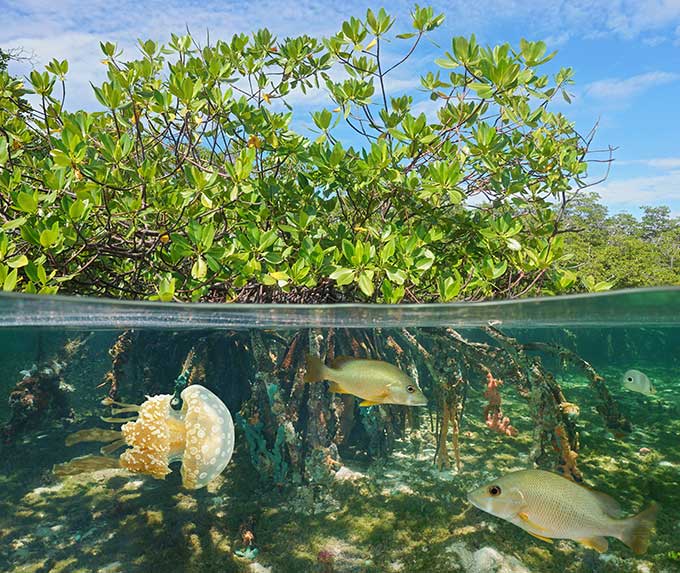
Both marshes and mangroves help reduce inland flooding. “Mangroves may reduce [storm] surge more because they are taller,” Armitage says. “But their height also makes them more vulnerable to storm damage.” The benefits are about equal between the two types of wetland, she concludes.
Coastal wetlands are essential for flood protection during big storms, says Siddharth Narayan. He’s a coastal engineer at East Carolina University in Greenville, N.C. He and a team of researchers from around the world used a computer model to understand just how much of a difference marshy wetlands make. (A computer program, such a model uses math to predict how a complex real-world event might unfold.)
They ran their program using Hurricane Sandy as their model storm. This superstorm hit the Northeastern United States in 2012. It killed 72 people and its flooding alone caused $50 billion in damage.
The computer model looked at property damage that Sandy caused along the Atlantic coast from Maine to North Carolina. The team ran the model twice: first with wetlands as they exist now, and a second time with all these wetlands removed. Without those wetlands, the U.S. East Coast “would have experienced $625 million more in damages,” Narayan now reports. Areas upstream from coastal wetlands also benefited in the model — even if they no longer had nearby wetlands. That’s because coastal wetlands would sop up the excess water, slowing the surge upstream.
Wetlands could actually cause a few areas to flood more, according to the model. That’s because homes here had been built between the wetlands and ocean. Those homes wouldn’t get any benefit from wetlands soaking up the storm surge. What’s more, the wetlands would prevent some of that water from moving inland, so flood levels around those homes would rise higher.
Wetlands under threat
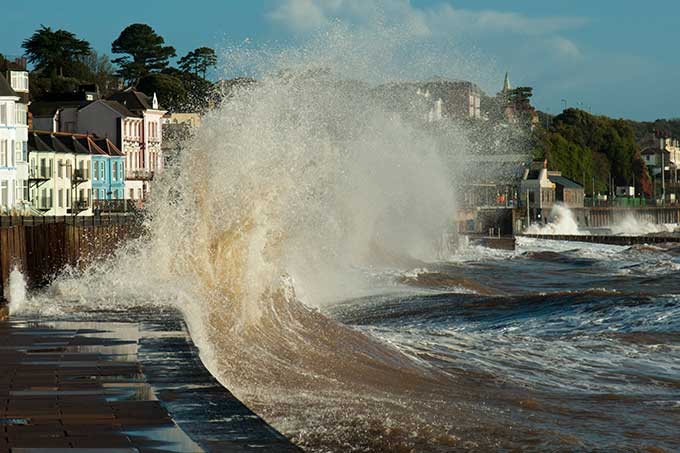
Narayan’s model didn’t include wetlands as they existed 100 years ago. Those were much larger than today’s. Coastal wetlands have been shrinking around the world for the last century. Anything that interrupts the way they interact with their surroundings can pose risks to them, Narayan says. That can include changes in the flow, temperature or saltiness of water, he notes. That last one is a major problem. If too much freshwater — or salty seawater — gets into the wetlands, it can kill off plants that need just the right amount of salt to thrive.
Wetland sediment also erodes from the constant wash of waves. In the past, spring floods replaced that missing sediment, Narayan says. Swollen rivers carried sediment downstream, depositing it along the way. This rebuilt the sandy base for wetlands along rivers. It also built the broad deltas that form where rivers meet the sea.
But people have altered rivers to prevent floods. Dams hold back sediment, trapping it higher up the river. Riverbanks are often reinforced with concrete, to prevent them from eroding. These changes have stopped the essential flow of nutrient-rich sediment to the river’s deltas and the wetlands they support.
Other threats to wetlands are more direct. People fill them in to build homes, restaurants or hotels. They use chemicals that kill weeds and pests. These can then wash downstream, harming plants and animals along the way. Building roads can cut off the flow of water. Severe storms can kill wetland plants by carving channels that let seawater move too far inland. Other times, Narayan points out, storm surges can be surprisingly helpful, depositing sediment that helps wetlands extend out into the ocean.
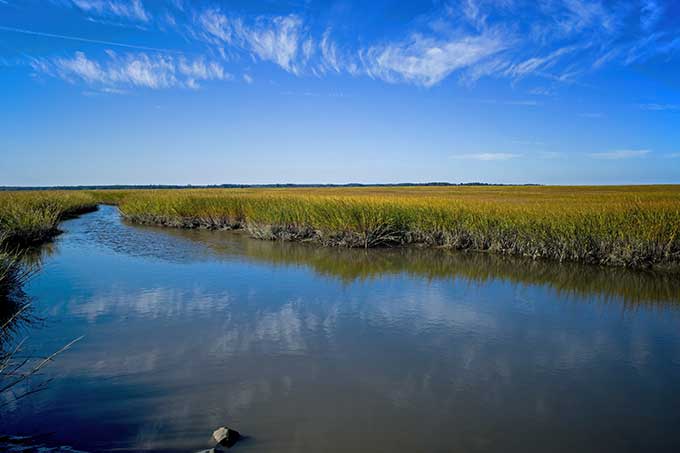
To survive, coastal wetlands need space to shift, Narayan explains. Wetland plants need specific amounts of salt in the water — too much or too little will kill them. That creates another problem: As Earth’s climate changes, sea levels are rising, pushing saltwater farther inland.
Wetland plants respond to rising sea levels “by growing vertically and also by shifting landward,” Narayan says. They try to “stay in the same tidal range that they’re used to.” But this requires space, he notes. And in many places, human-built barriers prevent a wetland’s ability to move. “As a result, these living wetlands end up getting squeezed against a hard shoreline and drowned,” he says, as the seas rise.
Exactly how sea-level rise will affect coastal wetlands has been a bit of a mystery. But a recent study by Australian researchers offers hope. Kerrylee Rogers is a coastal scientist at the University of Wollongong. It’s in New South Wales, Australia. Rising seas can play a role in fighting climate change, her team finds. They do this, Rogers explains, by forcing coastal wetlands to store carbon below ground and within the living plants.
The team compared the carbon stored in the sediments of 345 coastal wetlands. They were on every continent except Antarctica. Some were where sea level is rising rapidly. In others, water levels had been largely stable. Where seas had been rising, they found, coastal wetlands collected more sediments and carbon. “As long as the plants can survive, the sediment will continue to store carbon as seas rise,” Rogers concludes. “This will help coastal wetlands to adjust to sea-level rise.” It also could help slow climate change, she notes, by storing more carbon where it can’t be released into the air.
Bringing wetlands back
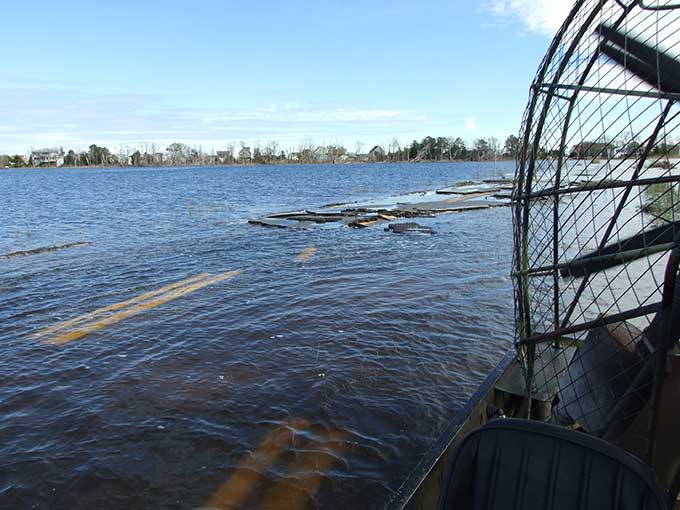
People around the world are starting to recognize the important role of coastal wetlands in flood control. And in supporting the fisheries that feed us. Many organizations are now working to restore coastal wetlands. However, those efforts face challenges. Some new wetlands haven’t worked as well as the wetlands they replaced. But with every setback, researchers learn what doesn’t work — and what does. This helps guide their next efforts.
Allowing the flow of water through coastal areas to return to normal seems key. That’s the lesson from Prime Hook National Wildlife Refuge. Home to sand dunes and marsh, it sits along the coast of Delaware. From 2006 to 2012, a series of storms broke through the dune barriers. Saltwater washed into an area that had been freshwater only, killing 4,000 acres of vegetation — an area equal to more than 3,000 football fields. In 2012, Hurricane Sandy blasted through the remaining dunes, completely flooding what had once been a thriving ecosystem.
The next year, the U.S. Fish and Wildlife Service began studying how to best rebuild the refuge. After studying computer models of natural water flow — both saltwater and fresh — they begin a massive restoration project. Bartholomew Wilson led the effort at this government agency.
His team dredged sand from Delaware Bay, using it to rebuild two miles of beach. They dug channels through the former wetland to let both freshwater and salty tides flow through it as they had in the past. Mud from the channels built soil up so that it was higher than the water line. On those mud flats, a team of 12 people planted more than a half million marsh plants to help anchor the sediment in place. A plane dropped about 4,500 kilograms (10,000 pounds) of seeds to further boost plant growth. And a new road along the shoreline now includes a bridge and four pipes that let tidal waters flow freely into the wetland on the other side.
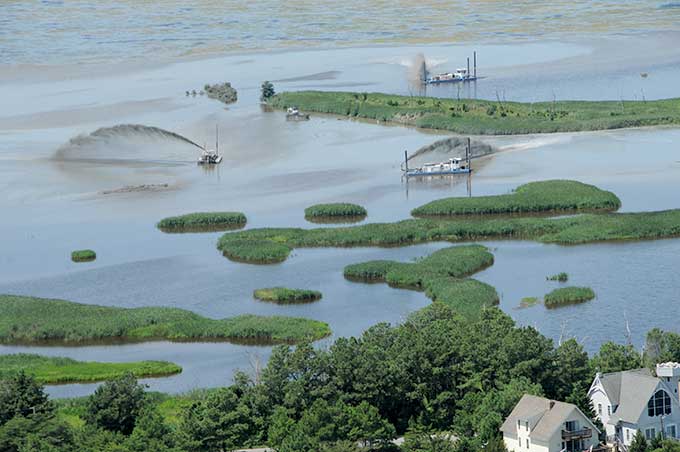
It was a massive project — and that was the biggest challenge, Wilson says. “We had a beach being rebuilt with one very large dredge and six bulldozers.” Those moved enough sand to fill 424 Olympic swimming pools. At the same time, three smaller dredges dug 25 miles of channels through the wetlands. “This is the largest restoration project ever on the East Coast,” Wilson says. It’s also one of the most successful, he adds.
By 2018, Prime Hook was a thriving ecosystem again. Many plant and animal species again call it home. These include bird species such as piping plovers, least terns and American oystercatchers. All three species are endangered, and the restored wetland provides habitat that may help boost their populations.
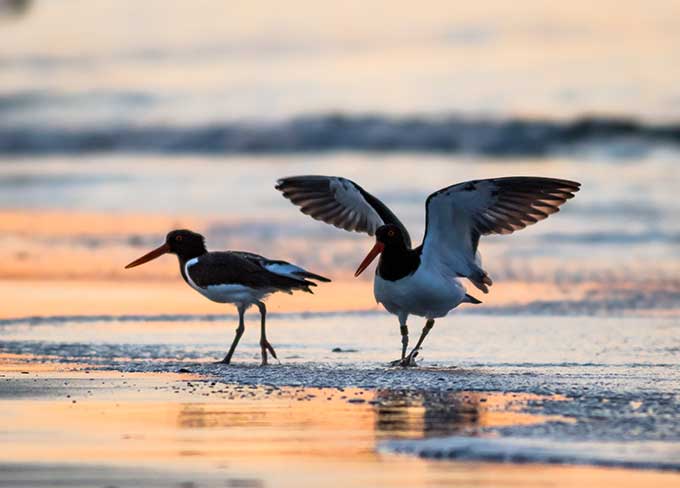
What’s more, the area has held up well to storms. “We had four storms last year in a few-week period,” Wilson told Science News for Students. And Prime Hook experienced “only minor erosion,” he says. No hurricanes like Sandy have yet tested the area’s resiliency. But one nor’easter brought a near-record storm surge — and it had very little impact on the restored refuge. (Nor’easters are a type of big, intense storm that can strike the northeastern United States.)
Wetland restoration benefits human communities, too. “Before the project, several of the roads leading through the refuge would flood every month or two,” Wilson says. The project finished in 2016. Since then, these roads haven’t flooded once.
Prime Hook is just one example of a restored coastal wetland. Many others are also underway around the world. Organizations and government agencies often work together, says Narayan of East Carolina University. They might move a road to give nearby wetlands more space. Or they might nourish them with sand or mud that, for a while, had been prevented from reaching the area. Adding culverts (openings) under roads can allow tidal flow in and out of a wetland that’s been disconnected from the ocean. It’s a big task, but many teams are up to tackling it.
“People are trying to figure out how we can work with nature to improve the health of these wetlands,” Narayan says. There is no one right answer on how to do this. And the solutions will vary with the site. But in the end, he says, such efforts can pay big benefits to both the environment and human communities.







